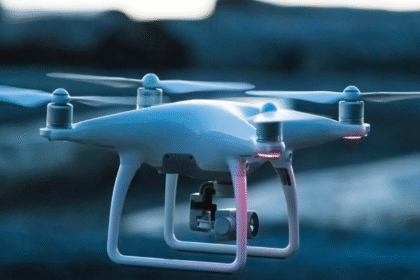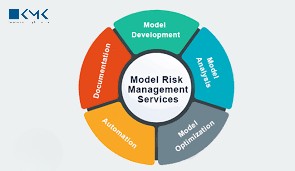Cryptocurrency mining can be one of the most rewarding ventures in the digital economy — but it’s also one of the most misunderstood. Many newcomers dive into mining expecting quick profits, only to realize later that their earnings depend on a web of technical, financial, and operational factors. Whether you’re mining Bitcoin, Litecoin, or any other crypto, understanding how to calculate mining profitability is the key to making informed decisions.
In this detailed guide, we’ll break down how to calculate mining profitability like a pro — using clear formulas, real-world logic, and insights from community-driven mining ecosystems such as.
Understanding Mining Profitability
Mining profitability refers to the net earnings a miner generates after accounting for all expenses — including equipment, electricity, maintenance, and pool fees. It’s the difference between what your hardware earns by validating blockchain transactions and what you spend to keep it running.
In essence:
Profit = Mining Revenue – Mining Costs
The challenge, however, lies in accurately estimating both sides of this equation. Revenue can fluctuate with network difficulty and coin prices, while costs can vary depending on electricity rates and equipment efficiency.
Step 1: Know the Key Factors That Affect Mining Profitability
Before diving into formulas, it’s crucial to understand the variables that directly influence your earnings.
1. Hash Rate
Your mining device’s hash rate determines how many computations it can perform per second. The higher the hash rate, the greater your chances of successfully solving a block and earning rewards. ASIC miners often measure this in terahashes per second (TH/s).
2. Power Consumption
Mining hardware consumes electricity continuously. Power usage is measured in watts (W). Efficient miners aim to produce more hash power for less energy.
3. Electricity Cost
Electricity rates vary by region and can make or break your profitability. The cost per kilowatt-hour (kWh) is a critical variable in the equation.
4. Mining Difficulty
The mining difficulty adjusts automatically based on how many miners are participating in the network. As difficulty increases, your chances of finding a block decrease, affecting earnings.
5. Block Reward
Each time a miner or mining pool finds a block, a reward is issued in cryptocurrency. For example, Bitcoin currently offers 3.125 BTC per block after the 2024 halving event.
6. Coin Price
Crypto prices fluctuate constantly. Since your rewards are in crypto, their fiat value depends on current market prices.
7. Pool Fees
If you’re part of a mining pool or a community-based platform like Mining Race, small fees (usually 1–3%) may apply to maintain the network and distribute rewards fairly.
Step 2: The Basic Mining Profitability Formula
To calculate profitability, use this formula:
Daily Profit = (Hash Rate × Block Reward × Coin Price) / (Network Difficulty × 2³²) – (Power Consumption × Electricity Cost × 24 / 1000)
While that looks intimidating, it simply means:
-
The first part calculates your expected daily revenue from mining.
-
The second part subtracts your energy expenses.
Let’s simplify it with an example.
Step 3: Example — Calculating Profit Like a Pro
Suppose you have a Bitcoin miner with the following specs:
-
Hash rate: 110 TH/s (110 × 10¹² hashes per second)
-
Power consumption: 3250 W
-
Electricity cost: $0.10 per kWh
-
Network difficulty: 88 trillion
-
Block reward: 3.125 BTC
-
BTC price: $65,000
-
Pool fee: 2%
Now, let’s estimate your revenue and profit.
1. Calculate Daily Revenue (Before Costs):
Expected daily Bitcoin = (Hash Rate / Network Hash Rate) × Blocks per day × Block reward
Assume the network hash rate is 600 EH/s (600 × 10¹⁸ H/s) and about 144 blocks are mined daily.
So,
= (110 × 10¹² / 600 × 10¹⁸) × 144 × 3.125
≈ 0.0000825 BTC per day
At a BTC price of $65,000, daily revenue = 0.0000825 × 65,000 = $5.36/day
After a 2% pool fee:
$5.36 – (5.36 × 0.02) = $5.25/day (net revenue)
2. Calculate Daily Electricity Cost:
= (Power in watts × 24 hours ÷ 1000) × Cost per kWh
= (3250 × 24 ÷ 1000) × 0.10 = $7.80/day
3. Calculate Daily Profit:
= $5.25 – $7.80 = –$2.55/day
In this scenario, you’re losing money daily — meaning mining isn’t profitable unless electricity costs are reduced or Bitcoin’s price rises.
Step 4: Tools and Calculators for Accuracy
Manually calculating profitability is insightful, but most professionals use mining profitability calculators. Popular tools like WhatToMine, CryptoCompare, and ASIC Miner Value provide real-time calculations based on live network data.
However, these tools give estimates — actual profitability can differ due to factors like downtime, pool variations, or hardware aging.
This is where community-driven ecosystems like Mining Race add a competitive edge.
Step 5: How Mining Race Simplifies Profitability
Mining Race redefines how miners approach profitability by merging individual performance with collective earning. Instead of working alone, participants (called Racers) join a shared global grid where rewards are distributed based on contribution, consistency, and engagement.
Here’s how Mining Race enhances profitability:
-
Shared Rewards:
Even if your miner doesn’t find a block, you still earn proportional rewards from the collective mining effort. This smooths out income fluctuations that solo miners often face. -
Performance Incentives:
Active Racers who optimize their rigs or help expand the network can earn additional bonuses, increasing their overall profitability. -
Reduced Operational Costs:
By leveraging community-scale power purchasing and network-level optimization, Mining Race helps lower costs associated with energy and maintenance. -
Transparent Analytics:
Mining Race offers data dashboards and profit insights — making it easier to track your real-time performance, forecast earnings, and calculate ROI like a pro. -
Community Learning:
Beginners can access shared strategies from experienced miners — helping them understand how to maximize returns through smarter configurations.
This cooperative model transforms mining from a high-risk, high-cost endeavor into a more stable and sustainable source of income.
Step 6: Estimating ROI (Return on Investment)
Professional miners also calculate ROI to evaluate how long it will take to recover their initial investment.
ROI = Initial Investment / Monthly Profit
For instance, if your mining setup costs $3,000 and you earn $150 per month in net profit, your ROI = 3000 / 150 = 20 months.
In a community system like Mining Race, ROI can improve through performance bonuses, network incentives, and shared infrastructure, reducing the overall payback period.
Step 7: Beyond Numbers — Market Timing and Strategy
Profitability isn’t just about formulas; it’s also about timing and strategy. Professionals monitor market cycles, difficulty adjustments, and halving events to maximize their returns.
Some key strategies include:
-
Holding Rewards: Instead of selling mined coins immediately, hold them until market prices rise.
-
Upgrading Hardware: Switching to newer, more energy-efficient ASICs can significantly boost profitability.
-
Optimizing Energy Use: Using renewable or low-cost power sources can drastically cut expenses.
-
Joining the Right Network: Choosing a transparent, collaborative ecosystem like Mining Race can improve overall yield stability.
Step 8: Common Mistakes to Avoid
-
Ignoring Electricity Costs: Always include power rates in your calculations.
-
Overestimating Uptime: Real-world operations face downtime for maintenance or internet issues.
-
Neglecting Difficulty Changes: Mining difficulty can rise sharply, reducing rewards.
-
Falling for Unrealistic ROI Claims: Some platforms overpromise returns — always verify data transparency.
Final Thoughts
Calculating mining profitability isn’t just about crunching numbers — it’s about understanding the interplay between technology, costs, and community. By mastering the core metrics and applying strategic thinking, anyone can approach mining like a professional investor.
Platforms like Mining Race elevate this process by combining real-time data, community collaboration, and fair distribution. They transform mining from a competitive solo pursuit into a shared journey — making profitability more achievable and sustainable for everyone involved.
Whether you’re a beginner looking to start your first rig or a seasoned miner optimizing performance, the path to success begins with one simple principle: measure before you mine. With the right tools, strategies, and support from networks like Mining Race, you can calculate — and maximize — your mining profitability like a true pro.




